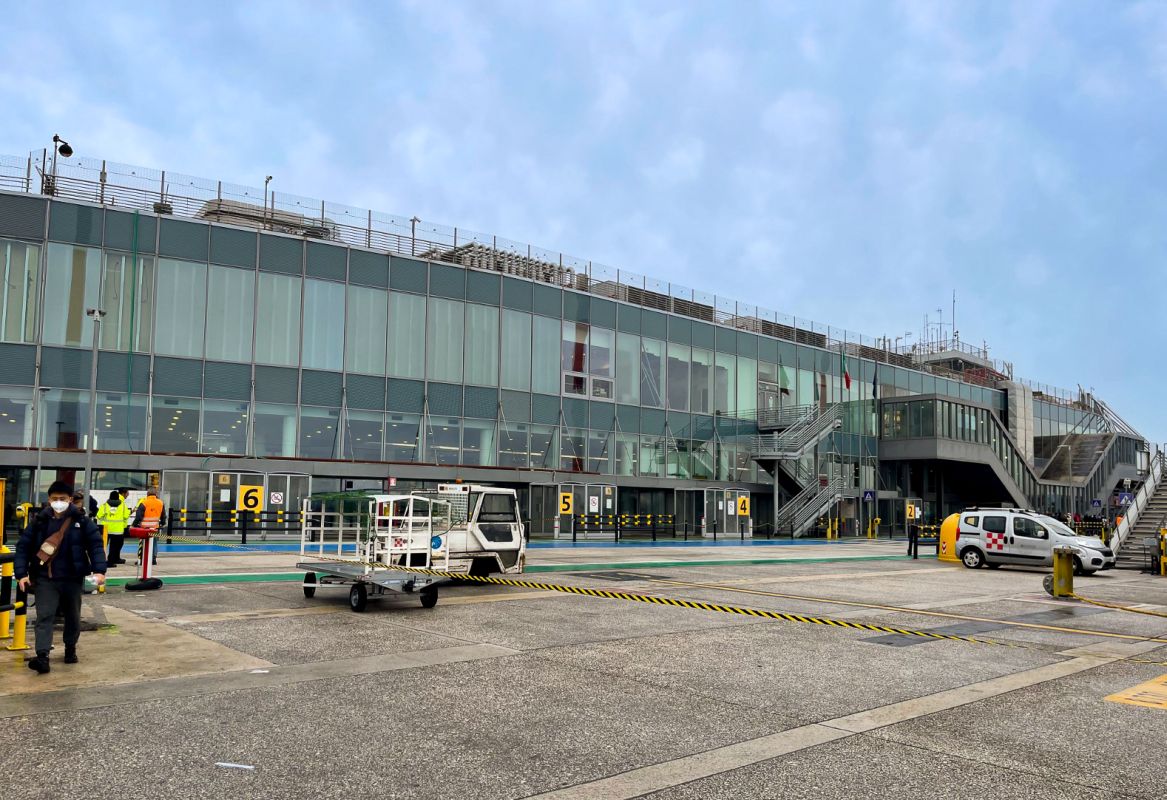The official name is almost unknown. Yet, more than a hundred years have passed since that solemn ceremony of June 19, 1921, when the Naples airport was named after a young life sacrificed during the First World War.
Ugo Niutta was the name of the airman portrayed in the statue placed at the entrance, second lieutenant and Neapolitan by birth, who died in combat at the age of just twenty-seven. He was awarded the Gold Medal for Military Valor.
When it was dedicated to Niutta, the Neapolitan airport had been operating at full capacity for just a decade. The first aircraft had only taken to the air in 1910, but it was already established as one of the most important in the peninsula, with air traffic also growing from abroad. To seal that success, in those early 1920s, was the construction of a new building in the pre-rationalist style of the time, to house the Royal Aeronautical Academy. Then it became the headquarters of the Royal Air Force Specialist School, between 1935 and 1939. Imposing structures, which the Second World War would have largely erased, with the exception of the central body of the building which has been preserved to this day. After all, the "Niutta" airport had a mainly military use in the first half of the last century, to then become a civil state airport, while remaining active as a military air base.
Although a century has passed, the solemn naming has not undermined the name by which the Naples airport is known everywhere, even if it is difficult to pronounce for foreigners: Capodichino. Borrowed from the toponym of the hill that hosts it, originally Caput Clivii, the head of the slope, or the beginning of the road that led to the city. Various transformations have followed over time, from Caput de clivio to Capo de chio, up to the synthesis of Capodichino.
From Porta Capuana began the ascent towards the charming hill, covered with vineyards and orchards. Its position turned out to be ideal for hosting balloon flights, which in the early nineteenth century kept the crowds in suspense in front of the evolutions of modern, futuristic balloons.
In truth, in Naples a balloon had already risen on 13 September 1789 in the heart of the city, in front of Maria Carolina and Ferdinand IV, who witnessed the unusual show from the terrace of the Royal Palace. The protagonists of that first evolution were two pioneers of flight: Vincenzo Lunardi from Lucca, the first Italian aviator, and Tiberio Cavallo.
It was then, at the time of the French, that the hill had been leveled by order of Joachim Murat, to house a racecourse and hold military exercises. And on that esplanade, called Campo di Marte, the heroine of the moment had also performed, Marie Sophie Blanchard, the first woman to dedicate her life to flying. To her already numerous and daring feats, which had sent the public of half Europe into raptures, in 1811 she added an unprecedented flight from Rome to Naples, climbing up to 3600 meters in height. At the time, nothing seemed impossible to the woman who had flown the Alps and made dozens of ascents, also experimenting with important technical innovations.
A hundred years later, in May 1910, the first aeronautical meeting had been held, but it had been a fiasco. And in 1911 Eduardo Scarfoglio, director of "Il Mattino" also flew as a passenger on the Campo di Marte. Then, on April 23, 1912, by the Neapolitan Aeronautical Club, Regina Ferrario took off and threw red carnations over the city. She was the first Italian female pilot and the seventh in the world to have the patent. Then the progress of the airport has been continuous. In 1920 the first runway for the mail service between Naples and Rome was inaugurated and in 1925 the complex was built to open the Aeronautical Academy, which however was located in the Royal Palace of Caserta.
Everything was destroyed during the Second World War and reconstruction had to wait until 1948. Then, in the 1950s, civil aviation began to develop and subsequently the Naples airport gained an increasingly important role. With its two intense centuries of life, Capodichino tells a story that starts from hot air balloons and arrives at today's modern international airport.

